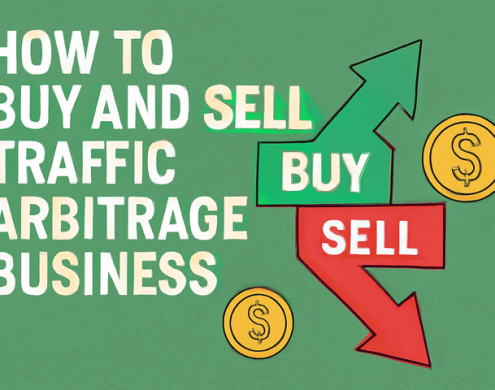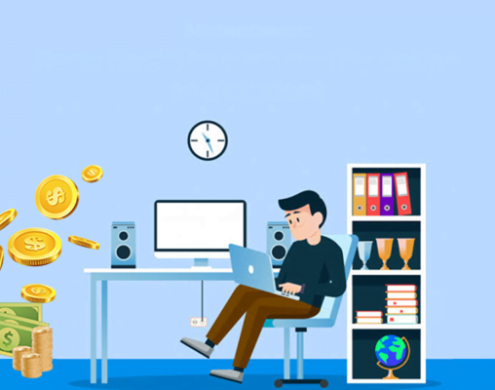Currently Empty: $0.00

A Complete Guide to Learn Forex Trading
Foreign exchange trading, or forex trading, has grown in popularity as a means of making money from currency trading. But being eager to trade isn’t enough to become a great forex trader. It necessitates discipline, market knowledge, and trading plan development. We will examine how to become a forex trader in this extensive tutorial, emphasizing the procedures, methods, and essential ideas required to be successful in this profitable but demanding industry.
What is trading in foreign exchange?
It’s crucial to comprehend what forex trading is before learning how to become one. Buying and selling currencies in order to profit from changes in exchange rates is known as forex trading. With a daily trading volume of more than $6 trillion, the foreign exchange market is the biggest financial market globally.
Forex is a vibrant and interesting market since it is open twenty-four hours a day, five days a week, unlike stock trading. The EUR/USD (Euro/US Dollar), GBP/USD (British Pound/US Dollar), and USD/JPY (US Dollar/Japanese Yen) are examples of currency pairings that traders exchange.
Knowing the Fundamentals of the Forex Market
A network of banks, financial institutions, brokers, and dealers who purchase and sell currencies makes up the forex market. Learning about the market’s workings, exchange rates, and the variables that affect currency swings is necessary to become a forex trader.
Currency Pairs: You will always purchase one currency while selling another while trading forex. The base currency is the first one, while the quote currency is the second. For instance, the base currency in the EUR/USD pair is EUR, and the quote currency is USD.
Exchange Rate: The amount of the quote currency required to buy one unit of the base currency is determined by the exchange rate. One euro is worth 1.2 US dollars if the EUR/USD exchange rate is 1.2.
The price at which a broker is willing to purchase a currency is known as the bid price, and the price at which a broker is prepared to sell a currency is known as the ask price. These two prices are involved in forex trading. The spread is the difference between these prices.
How to Become a Foreign Exchange Trader
1. Discover the fundamentals of forex trading
Learning the fundamentals is the first step towards becoming a forex trader. Begin by learning the terms, the various order types (market, limit, and stop-loss orders), and the types of analysis that are employed in forex trading. There are two primary categories of analysis:
Technical analysis is the process of analyzing past price data and forecasting future price movements using charts. In technical analysis, tools like moving averages, RSI, and MACD are frequently employed.
Examining news reports, economic statistics, and geopolitical developments that may have an impact on currency values is known as fundamental analysis. Key components of fundamental analysis include job data, inflation, and interest rates.
To gain a firm understanding of these ideas, you can watch videos, read books, and enroll in online courses.
2. Select a Trustworthy Forex Broker
Selecting a forex broker is the next step after learning the fundamentals. Because they will give you the platform to execute transactions, a reputable broker is crucial to your success in forex trading. When selecting a broker, take into account the following factors:
Regulation: Select a broker who is overseen by a reliable regulatory body, such as the U.S. Securities and Exchange Commission (US) or the Financial Conduct Authority (FCA). Commission for Commodity Futures Trading (CFTC).
Trading Platform: Verify that the broker provides a dependable and easy-to-use trading platform. The sector makes extensive use of platforms such as MetaTrader 4 (MT4) and MetaTrader 5 (MT5).
Fees and Spreads: Seek out brokers who provide affordable fees and reasonable spreads. Finding a broker that provides good value for money is crucial because high spreads might reduce your profits.
Customer Service: Pick a broker who offers prompt customer service so they can help you with any problems you may encounter.
3. Create a Demo Account
Get a demo account with your broker before you start live trading. You can practice trading with fake money with a demo account, which lets you improve your skills without having to worry about losing real money. Take as much time as necessary to design your strategy and become familiar with the trading platform.
4. Make a little first investment
You can open a live trading account if you’re comfortable with your demo account. But it’s a good idea to start with a little investment when you’re just starting out. Significant danger is involved with forex trading, so it’s critical to carefully manage your risk, particularly if you’re just starting out.
5. Create a Trading Plan
You must create a well-thought-out trading strategy if you want to be successful at forex trading. This plan ought to consist of:
Risk management: Choose the percentage of your trading capital that you are prepared to risk on each transaction. Generally speaking, you should never risk more than 2% of your cash on a single deal.
When to join a trade (for example, in response to a specific technical signal or news event) and when to leave (for example, when a price reaches a specific target or stop-loss level) should be specified in your strategy.
Time Frames: Choose which time frames to exchange. While some traders might choose long-term trading (swing trading or position trading), others might favor short-term trading (scalping or day trading).
Backtesting your plan with historical data is essential to determine how it might have worked in the past.
6. Maintain a Trading Journal
For every forex trader to be successful, keeping a trading journal is a must. Keep a record of every transaction you make, including the reason you made it, the levels of your take-profit and stop-loss, and the deal’s conclusion. By doing this, you will be able to grow as a trader over time by learning from both your achievements and failures.
7. Keep abreast on market developments
Numerous factors, such as central bank policies, geopolitical events, and economic data releases, have an impact on the FX market. It is essential to keep up with the most recent market news if you want to become a forex trader. This will assist you in making well-informed trading decisions and preventing unforeseen circumstances that might impact your trades.
8. Be disciplined and patient
Patience is one of the most crucial qualities of a profitable forex trader. Making rapid money is not the goal of forex trading; rather, it requires discipline and consistency. Adhere to your trading plan and refrain from making rash judgments out of fear or greed, such as chasing losses.
Advanced Advice on How to Start Trading Forex
You can start honing your abilities and utilizing more sophisticated tactics after you have some experience. The following advice can help you develop your trading skills and discipline:
1. Take Care When Using Leverage
With less capital, you can manage a bigger position because to leverage. Leverage can increase your earnings, but it can also increase your losses. Particularly as a novice, it’s critical to use leverage carefully and refrain from overleveraging.
2. Pay Attention to Just a Few Currency Pairs
Instead of attempting to trade several currency pairings, concentrate on the ones you are most familiar with. This will enable you to create a more targeted trading strategy and have a deeper understanding of the price movements of certain currencies.
3. Constantly Learn New Things
Successful traders never stop learning since the forex market is always changing. Keep up on market trends, economic advancements, and trading tactics. To increase your knowledge, study books, take part in webinars, and follow knowledgeable traders.
4. Don’t Overtrade
Overtrading is the practice of making too many trades in a short amount of time, frequently as a result of emotional whims or the need to recoup losses. Poor decision-making and needless danger may result from this. Follow your plan and only make trades when the circumstances support it.
Recognizing the Dangers and Difficulties of Forex Trading
Understanding that forex trading, like any investment, has dangers is crucial while looking at how to become a forex trader. Currency price volatility has the potential to produce both large gains and equally large losses. We’ll go into greater detail about the hazards involved and successful risk management in this section.
1. Risk to the Market
The uncertainty around changes in currency prices is referred to as market risk. A number of variables, including market sentiment, geopolitical developments, and economic data, can cause the currency market to be extremely volatile. For example, the market can become unpredictable when news of a central bank interest rate adjustment causes abrupt price changes.
Risk Management Strategy: Traders employ risk management strategies like position sizing and stop-loss orders to control market risk. By automatically exiting a deal at a predetermined price, a stop-loss order helps traders avoid suffering bigger-than-expected losses. The amount of capital you risk on each trade is known as position sizing, and it’s important to maintain this in relation to your total account balance.
2. Make Use of Risk
Leverage is one of the most alluring features of forex trading since it enables traders to manage bigger positions with less money. Leverage can increase gains, but it can also increase losses. Even a minor negative market movement might cause large losses if you utilize a lot of leverage.
Assume you are trading with 100:1 leverage, which allows you to control $100 of the market for every $1 of your own funds. One percent of your starting capital could be lost if the market swings against you. However, you could make 100 times the profit if the market moves in your favor.
Risk Management Strategy: Until they have enough experience, beginners should refrain from employing large leverage. A conservative leverage ratio of 10:1 or below is advised by many profitable traders because it permits safer trading while still offering profit-making chances.
3. Risk to Emotions
Another important element that many traders are impacted by is emotional risk. When trades don’t go as planned, forex trading may be quite stressful. Fear of losing money can cause people to make snap decisions, like pursuing losses or giving up on a carefully considered plan. However, greed can cause you to hang onto a successful position in the hopes of making even more money.
Emotional Management Strategy: Traders must adhere to their trading strategies and refrain from making decisions based solely on their emotions in order to control emotional risk. This entails staying true to your entry and exit locations and resisting the urge to engage in excessive trading. Maintaining a rigorous trading schedule might also reduce impulsive choices.
5. Absence of expertise and experience
For novices who are still learning the ropes, the forex market can be particularly complicated. A lot of novice traders join the market without having a thorough understanding of how it operates or the factors that influence currency values. Losses may arise from bad decisions brought on by this ignorance.
Solution: Time spent on ongoing education is crucial to overcoming this obstacle. Follow professional traders, watch tutorials, take online classes, and read books. Additionally, you can test your abilities without risking real money by practicing on a sample account. Recall that the secret to becoming a skilled forex trader is constant learning.
Advanced Techniques for Forex Trading
You can begin experimenting with more complex methods when you’ve gained a fundamental understanding of how to trade FX. You can improve your trading strategy by using these tactics, which are frequently used by more seasoned traders.
1. Trend-Following Approach
Finding a dominant market trend and trading in its direction are the two main components of a trend-following strategy. The fundamental idea is that prices frequently follow trends, and traders can make money by spotting and capitalizing on these patterns.
How It Operates: To spot trends, traders employ technical indicators like trendlines, moving averages, and the Average Directional Index (ADX). Traders enter long positions during uptrends and short ones during downtrends after identifying a trend.
For instance, if the EUR/USD pair is rising, a trader may wait for a slight decline before committing to a long position in the hopes that the upward trend will continue.
Risk management: Making sure you enter a trade early in a trend and leave before it reverses is the key to success when using a trend-following approach. As the trend continues, using trailing stops can help lock in profits.
2. Strategy for Range Trading
The foundation of range trading is the notion that over time, currency pairings often move inside a particular range. Support, or the price level at which the currency pair typically bounces upward, and resistance, or the price level at which the pair typically reverses downward, form a range.
How It Operates: Traders sell at resistance levels and purchase at support levels. In order to determine if a range is overbought or oversold, range traders will also employ oscillators like the Relative Strength Index (RSI).
For instance, a trader may purchase close to 1.3000 and sell close to 1.3100 if the GBP/USD pair is trading between 1.3000 and 1.3100. The price is assumed to stay within this range by the method.
Risk management: When range trading, there is a chance that the market will move outside of the range, which might lead to large losses. In addition to using stop-loss orders, traders should monitor market situations that could lead to a breakout.
3. The Breakout Strategy
Entering a trade when the price moves outside of a predetermined support or resistance level is known as a breakout approach. When traders anticipate that the price of a currency pair will break out and move dramatically in one direction after it has been trading inside a range, they employ this approach.
How It Operates: To find breakout points, traders utilize chart patterns like triangles, rectangles, or channels. When the price hits a critical level, traders start taking positions in the breakout’s direction.
For instance, traders would buy long positions if the USD/JPY pair broke over 112.00, which would indicate the possibility of an upswing if it had been trading between 110.00 and 112.00.
Risk management: Traders should wait for confirmation of the breakout before placing a trade because false moves frequently accompany breakouts. One way to guard against fake breakouts is to place a stop-loss order slightly below the breakout level.
4. The Carry Trade Strategy
Borrowing money in a currency with a low interest rate and investing it in a currency with a higher interest rate is known as a carry trade strategy. Making money off of the difference in interest rates between the two currencies and any future price increases is the aim.
How It Operates: For instance, a trader could borrow Japanese yen (JPY) at a low interest rate and invest in New Zealand dollars (NZD) to profit from the interest rate differential if the interest rate in Japan is 0.25% and the interest rate in New Zealand is 3.00%.
For instance, a trader may hold a position for a long time in order to get interest payments if the NZD/JPY pair is trading at 80.00 and they believe the interest rate differential will continue to favor the position.
danger management: When using carry trades, the trader runs the danger of suffering large losses if the currency pair moves against them. As a result, it’s critical to utilize suitable stop-loss levels and take into account the economic variables that may affect interest rates.
Important Resources and Tools for Forex Traders
You will need the appropriate tools and resources to execute your trades effectively if you want to become a forex trader. The following are some necessary resources for any forex traders:
1. Platform for Trading Forex
You can place trades on the trading platform that your broker will supply. MetaTrader 4 (MT4), MetaTrader 5 (MT5), and cTrader are the most widely used platforms. You can track your transactions, place orders, and study charts using these services.
2. Technical Measures
The price and volume of a currency pair are the basis for mathematical computations known as technical indicators. They support traders in determining patterns, points of entry, and points of exit. Typical technical indicators include the following:
Averages that move
Index of Relative Strength (RSI)
Bands of Bollinger
MacD stands for Moving Average Convergence Divergence.
3. Calendar of Economic Events
Important events including central bank meetings, the release of economic statistics, and geopolitical developments are tracked by an economic calendar and may have an impact on the FX market. You can predict market fluctuations and adjust your trading strategy by keeping an eye on the economic calendar.
In conclusion, becoming a forex trader entails much more than just creating an account and making transactions. It calls for training, experience, risk assessment, and a well-thought-out plan. Learning the fundamentals, comprehending the dangers, creating a trading strategy, and maintaining discipline are all necessary steps on the path to being a profitable forex trader.
You can establish a successful and long-lasting career in the forex market by controlling risk, employing sophisticated trading techniques, and never stopping learning. Keep in mind that learning to trade forex requires patience, time, and a dedication to become an expert.
Related Posts

How Traffic Arbitrage Businesses Are Purchased and Sold





